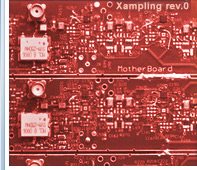 |
Software & Hardware
Software
SPARCOM - Sparsity-based Super-resolution Correlation Microscopy
O. Solomon, M. Mutzafi, M. Segev and Yonina C. Eldar
Introduction
For more than a century, the wavelength of light was considered to be a fundamental
limit on the spatial resolution of optical imaging. Particularly in light microscopy, this limit,
known as Abbe's diffraction limit, places a fundamental constraint on the ability to image subcellular organelles with high resolution. However, modern microscopy techniques such as
STED, PALM and STORM, manage to recover sub-wavelength information, by relying on
fluorescence imaging. Specifically, PALM/STORM acquire large sequences of fluorescence
images from molecules attached to the organelles within the imaged specimen, such that in each
frame only a small set of fluorophores are active. The position of each fluorophore can be found
accurately in each frame, and the image is recovered by superimposing the points from all
frames. The resulting grainy image is subsequently smoothed to produce the final superresolved image with a resolution of tens of nano-meters. However, because PALM/STORM
rely on many (>10,000) exposures, they suffer from poor temporal resolution. To address that,
super-resolution optical fluctuation imaging (SOFI) was shown to produce sub-diffraction
images with increased temporal resolution, by allowing for higher fluorophore density and
exploiting the temporal statistics of the emissions. However, the improved temporal resolution
of SOFI comes at the expense of its spatial resolution, which is not as high as that of
PALM/STORM. Here, we present a new method called SPARCOM: sparsity-based superresolution correlation microscopy, which combines a shorter integration time than previously
reported with spatial resolution comparable to PALM and STORM. SPARCOM relies on
sparsity in the correlation domain, exploiting the sparse distribution of fluorescent molecules
and the lack of correlation between different emitters. We demonstrate our technique in
simulations and in experiments, and provide comparisons to state-of-the-art high density
methods.

References
Software Download
Installation:
1. Download. 2. Follow the instructions in the README.md .
|
|

